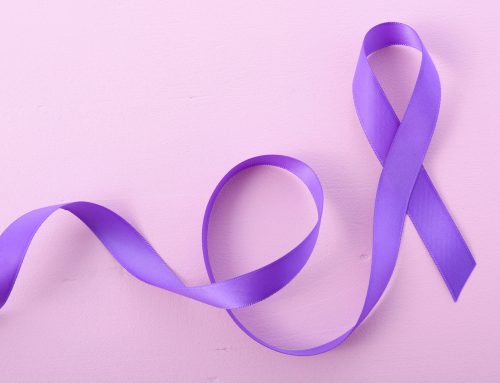We have all heard the word, diabetes, but what is it that come to mind when you think of diabetes? Here are some definitions that are not spoken about that much in the ads for meters and medical solutions for diabetes.
Two Types of Diabetes
Most people know that there are two types of diabetes, even though they generally hear about, watch commercials about, and know people (maybe themselves!) that have what is called “Type 2 Diabetes.”
And, if there is a Type 2, there is also a Type 1, eh? But, what are the differences between these two types?
It used to be that the two types of Diabetes were differentiated and labeled as “juvenile onset diabetes” (a.k.a. juvenile diabetes”) and “adults-onset diabetes (a.k.a. “adult diabetes”). When it was determined that adults could actually develop the same type of diabetes as the juvenile-onset, there needed to be a new definition and separation of types.
The next easiest way of differentiating was to refer to the types as “insulin-dependent” (requiring injection or another method of insulin delivery) and “non-insulin-dependent (able to be managed without the injection of insulin).
This non-insulin type of diabetes could be managed by diet and/or oral medication, with no needles.
To some extent, these are loosely the current definitions. The exception is the Type 2 (non-insulin-dependent) type of diabetes that could evolve into the requirement for insulin, but is still considered Type 2.
Type 1, on the other hand, does not have the ability to be managed any other way but through the use of insulin.
Sub-Types of Diabetes
So, now that we have figured out the two current types of diabetes, we should understand the sub-types. We have already discussed the two (actually three) types of Type 2 diabetes, which includes:
- diet-controlled
- oral medicine
- insulin (usually after having been managed by the first two)
Now, the three types, very closely related, of the Type 1 diabetes:
- able to render unconsciousness
- brittle diabetes
- non-unconscious
In reality, the first two types are more than likely the same. The difference between the first and third is that the diabetic is able to lose consciousness due to blood sugars that go too low. This is not uncommon in Type 1 diabetes and is the type that is portrayed in the movie “Steel Magnolias” staring Julia Roberts. It is very likely that Julia’s character suffered from brittle diabetes.
Depending on the research, brittle diabetes can be described as “unmanaged,” but that is not a reflection (though it could be!) on the patient, but rather that the outcome of the management of the diabetes is non-existent or not easily identified. In other words, if someone were to review the logs of blood sugar testing (testing to see how much blood sugar is in the blood), would reveal bounces from high to low, in a frequent, non-patterned format. This will certainly be the case in those who do not manage their diabetes, but also exists in the type of diabetes that does not respond well, or more precisely, consistently to any treatment. This is often the case with adults who have had Type 1 diabetes for decades and have developed conditions like hypoglycemic unaware, scare tissue (not responding to insulin in a consistent manner) and other diabetes-related conditions.
So, what have we learned? We have learned that there are two types of diabetes, but that within those two types, there are sub-types, as well. One doesn’t necessarily have to know all the ins-and-outs of diabetes and its history or diagnosis to simply understand that those who suffer from it are human beings, the same as you and me.





Diabetes is becoming common day by day but one can get it into control by following some tips.
1. Daily walk for 45 minutes keep Diabetes control . A diabetic patient should monitor his sugar level before walk and then after walk.
2. Diet : Natural diet helps a lot in maintaining good control over diabetes. A cup of fenugreek tea control diabetes.
3. less intake of oily food and junk food.
4. Intake of fruits like Guava , papaya with sprinkle of lemon juice .
5. Vegetables like Raw Papaya , Raw banana, cabbage, parma helps in keeping diabetes in control.
Thank you, Nisha, for your tips.
While these are great tips, there is not a precise one-size-fits-all solution for anyone’s specific health condition. There are general guidelines. This is why each person, including diabetics, should consult with their licensed health care providers to find the plan that works well for their specific condition.
In the case of the tips that you provide, it appears that those may work well for a Type 2 diabetic, but in some cases, for Type 1 diabetics, especially brittle Type 1 diabetics, this could case problems. The example is step #4, where the Guava, while healthier, still translates into a sugar in the body and still needs to be properly addressed with insulin, in the case of insulin-dependent diabetics (like Type 1 insulin-dependent). This is why it comes down to diabetes management and not just a formula that works for anyone with a derivative of the diabetic diagnosis, which is actually what this article is all about (recognizing that there are differences) 😉
I want to know is it possible for a individual with type 2 diabetes to fast for extended period of time on nothing but water alone?
Hello Will,
First of all, the disclaimer is that I am not a doctor or medical professional, so consulting with your medical practitioner is advised.
However, that said, since food is one of the balancing factors for a type 2 diabetic (in addition to exercise and possibly medicine), it is NOT advisable to go without food (fast).
It may be possible to do a fast with fruit juice, to maintain a sugar intake to keep as balanced as possible. Either way, you are actually messing with one of the balancing factors. So, it would be like a scale, with stones on each side of the scale and you are removing the stones from one side. it is going to cause the scale to tip.
You should consult with your medical practitioner and express your desire to fast and ask if there is a safe way to do it. If you are on medication, that will need to be adjusted if you are not ingesting food and you will need to have the parameters for that adjustment. Also, your exercise should be decreased if you are not ingesting food.
The second most important thing (after consulting with your medical practitioner) is to monitor, monitor, monitor some more! You will want to have that blood glucose machine practically attached to yourself and constantly monitor your blood sugar. Doing it once an hours is not too frequent! And, do not depend on “how you feel” as a gauge. Ensure that your meter is working correctly (you could test against another meter, or test in your doctor’s office) and test it even every 30 min, to ensure that your blood sugar is not dropping rapidly.
Another factor is the type of diabetes. So, if you are a borderline diabetic versus an insulin-dependent type 2 diabetic, there is a difference.
Please, please, consult with your physician before potentially embarking on a fast.
Jamun seeds, leaves, fruits and juice from syszygium cumin is beneficial as well.
Search for decrease GI ratings if you struggle with
all forms of diabetes. It is important that you do
various physical activities daily so you will not gain much weight.